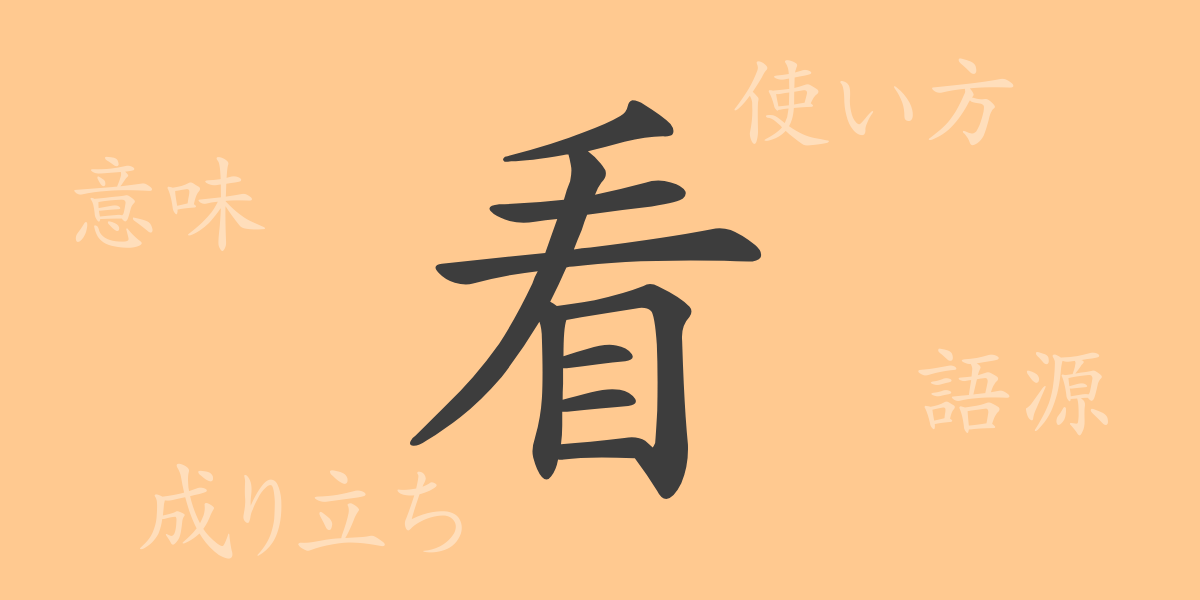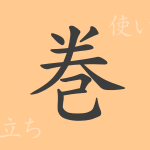The beauty and complexity of the Japanese language are often expressed through the depth of Kanji characters. In this article, we delve into the commonly used Kanji “看” (Kan), exploring its origins, meanings, usage, and cultural impact. Understanding the history and significance behind each Kanji can deepen your appreciation of the Japanese language.
The Origin (Etymology) of 看
The Kanji “看” (Kan) has its roots in ancient China. Originally, it was a combination of the characters for “hand” and “eye,” representing the act of holding something firmly with the hand and watching it carefully with the eye. This imagery has evolved to convey meanings such as supervision and nursing, retaining its essential meanings even today.
Meanings and Usage of 看
The Kanji “看” (Kan) primarily means “to look,” “to watch over,” and “to supervise.” In the medical field, it is often used in terms such as “看護” (Kango – nursing), which means taking care of patients. In Japanese, there is a rich variety of words and expressions that include this Kanji, each carrying different nuances depending on the context.
Readings, Stroke Count, and Radical of 看
The Kanji “看” (Kan) is distinctive in its form and sound.
- Readings: The Onyomi (Chinese reading) is “かん” (Kan), and the Kunyomi (Japanese reading) is “みる” (mi-ru).
- Stroke Count: A total of 9 strokes.
- Radical: Hand ( Te-hen).
Idioms, Phrases, and Proverbs Using 看 and Their Meanings
Idioms, phrases, and proverbs containing “看” (Kan) play a significant role in the Japanese language. For example, “看板” (Kanban) represents the face of a store or company, and “看病” (Kanbyou) refers to the act of caring for a sick person. “看過” (Kanka) means to overlook something, and “看護師” (Kangoshi) refers to a professional nurse. These expressions are frequently used in Japanese society and culture.
Summary of 看
The Kanji “看” (Kan) is an indispensable element in Japanese communication, symbolizing actions such as looking, watching over, and supervising. Its use extends beyond everyday life to professional occupations and cultural expressions. Through this article, you have gained a deeper understanding of “看” (Kan). Continuing to learn about each Kanji character will allow you to appreciate the rich history and culture behind the words.

























